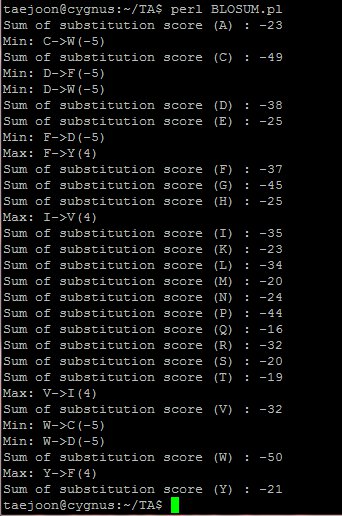


Is undefined, the following subexpression is false: This, it takes advantage of the fact that an unidentified listĮlement is equal to the null string and that the null string isĮquivalent to 0. The first subexpression tests for the end of the range. If any of these subexpressions are true, the loop continues. That are operands for the logical or operator ||. The conditional expression to be evaluated consists of three subexpressions Lines 12 and 13 are the start of the loop that prints the range. Line 11 is a print statement that indicates that the Line 9 creates a list that consists of the numbers between $startĪnd $end, and stores the list in the array variable 10 initializes the counter variable $count to 0. Lines 6 through 8 repeat the same process for the end of the range,Īssigning the end of the range to the scalar variable $end. Line 5 chops the trailing newline character. Line 4 assigns the resulting number to the scalar Line 3 retrieves the number from the standard Lines 3 through 5 retrieve the start of the Similarly, you can use the value of an expression as an elementġ2: while ($list != 0 || $list = -1 || (It remains 26Įven if a different value is assigned to $var.) If $var has been assigned the value 26, the In this case, the current value of the scalar variable becomes "Assigning to Scalar Variables from Array Variables" later today.Ī scalar variable name can always be included as part of a list. This is not a severe limitation because one canīe converted to or assigned to the other. For example, the listĪre not the same thing. A list can have no elements at all, as follows:Ī list with one element and a scalar value are different entities. Lists can be as long as needed, and they can contain any scalar This list contains four elements, each of which is a scalar value: The following is a simple example of a list: Assigning to scalar variables from array variablesĪ list is a sequence of scalar values enclosed in parentheses.Accessing an element of an array variable or list.

The relationship between scalar variables and lists.Today's lesson describes lists and array variables, and it shows Known as a list this collection of values can be stored Perl also enables you to define an ordered collection of values, Which are single units of data, and scalar variables, which The Perl programs you have seen so far deal with scalar values, Reading an Array from the Standard Input File Using the Array-Slice Notation as a Shorthand Using Variables in Array-Slice Subscripts Using List Ranges in Array-Slice Subscripts Substituting for Array Variables in StringsĪssigning to Scalar Variables from Array Variables Using Brackets and Substituting for VariablesĬopying from One Array Variable to Another Day 5 - Lists and Array Variables Chapter 5 Lists and Array VariablesĪccessing an Element of an Array Variable


 0 kommentar(er)
0 kommentar(er)
